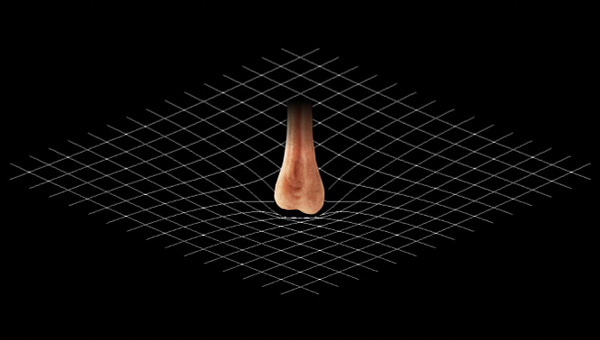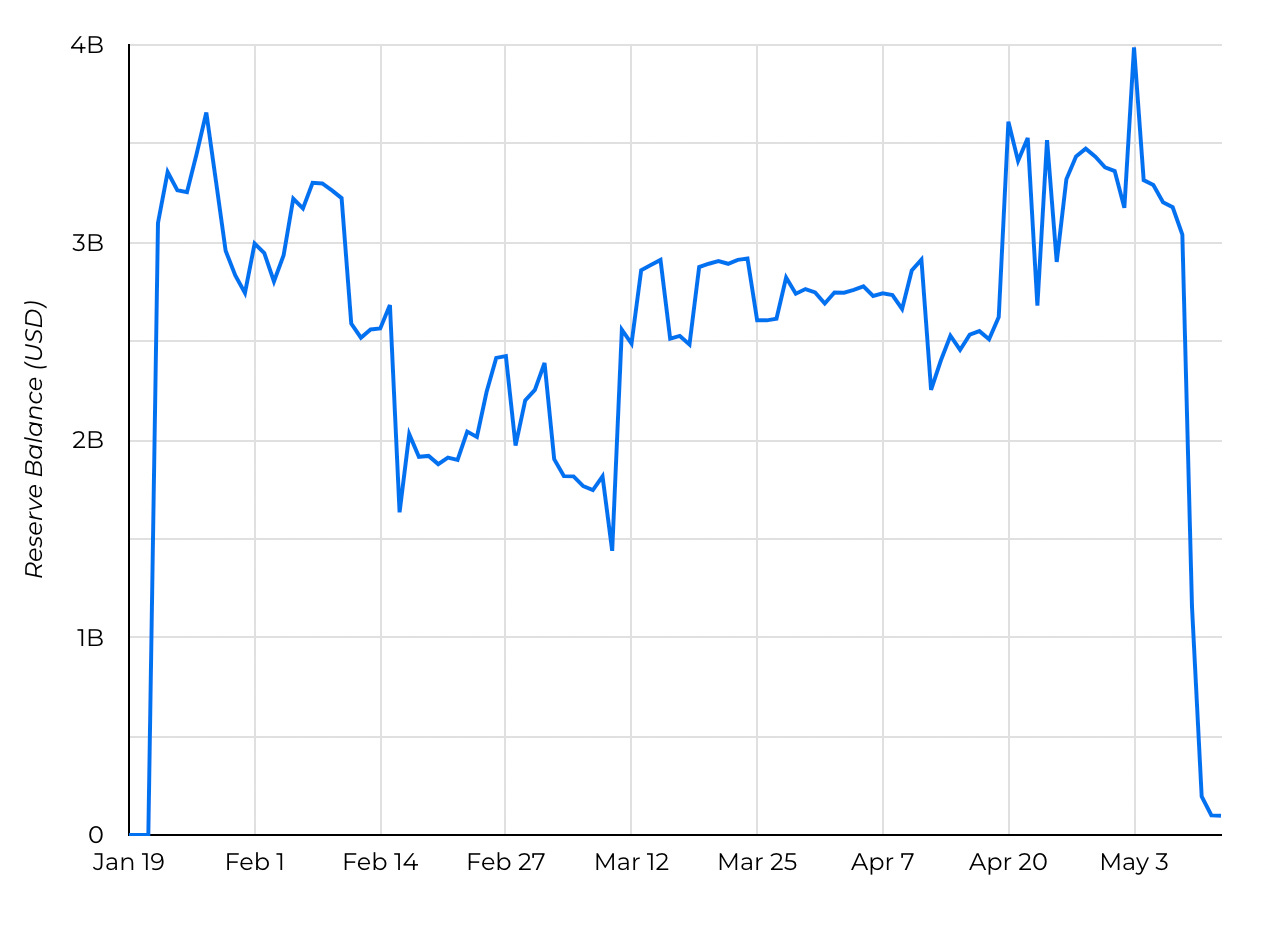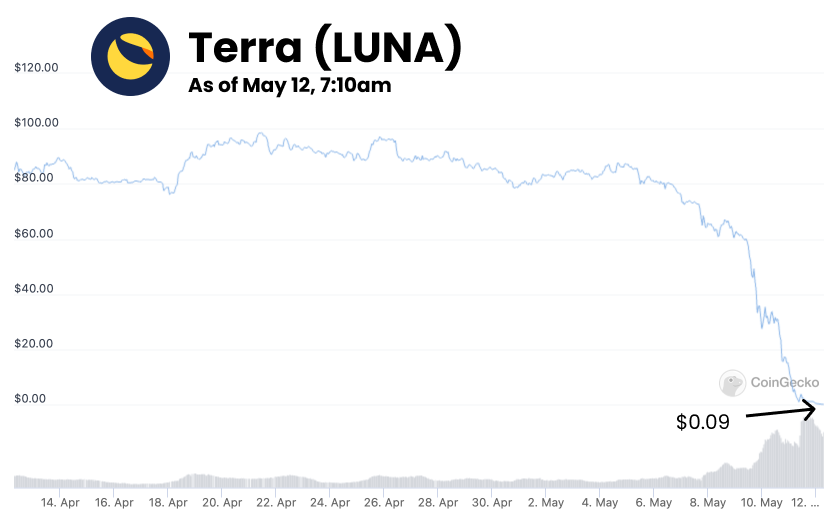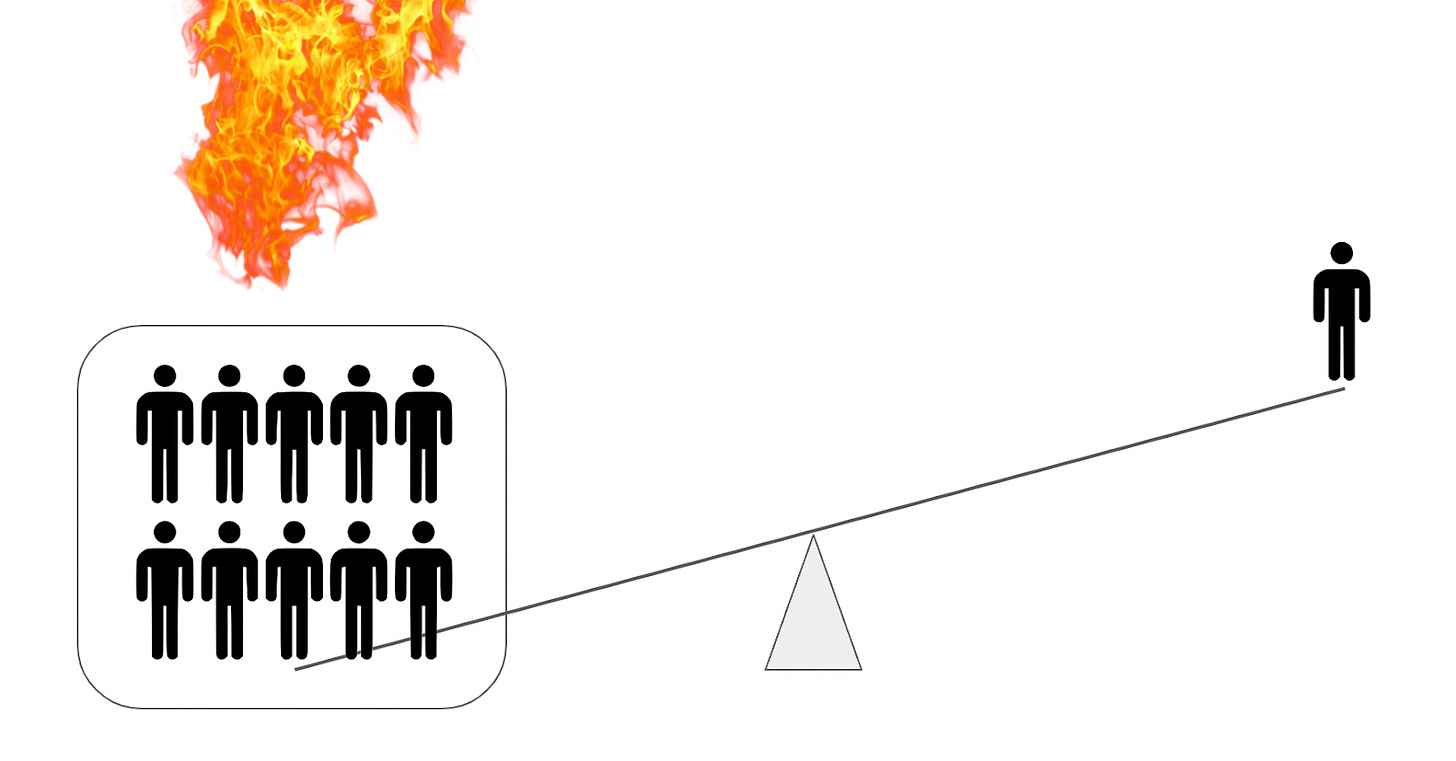

Terra: To the Moon and Back
source link: https://www.notboring.co/p/terra-to-the-moon-and-back?s=r
Go to the source link to view the article. You can view the picture content, updated content and better typesetting reading experience. If the link is broken, please click the button below to view the snapshot at that time.
Terra: To the Moon and Back
Jon Wu on What's Happening With Terra-Luna, UST, and the Broken Peg
Welcome to the 1,281 newly Not Boring people who have joined us since Monday! If you haven’t subscribed, join 122,025 smart, curious folks by subscribing here:
Today’s Not Boring is brought to you by… FTX US
If you’ve been following crypto at all over the past year, or if you listen to Not Boring Founders, you know FTX US and its founder, Sam Bankman-Fried (SBF).
Simply put, FTX US is one of the most complete apps in crypto, and its trading platform has the lowest fees in the industry. With FTX US, you can trade crypto with up to 85% lower fees than any other exchange on the market.
Of course, you can buy cryptocurrencies like BTC, ETH, and SOL (don’t look now, but they’re a lot cheaper than they were a week ago), but you can also buy Ethereum and Solana NFTs with no gas fees, and soon, you’ll be able to buy stocks on FTX US.
To get started on a safe, accessible investing platform, download the FTX US app on your phone or, for a more advanced experience, try the newly redesigned FTX US web app. Make sure to use the code NOTBORING to get free crypto when you trade over $10.
Start Trading in 3 Minutes with FTX US
Hi friends 👋,
Happy Thursday! We weren’t planning on sending anything out today, but then the market completely crumbled. It’s been a bloody, across-the-board meltdown kind of week, but one meltdown in particular has captured everyone’s attention: Terra.
Specifically, Terra’s two native tokens, Luna (LUNA) and TerraUSD (UST) were supposed to work in tandem to peg UST, the algorithmic stablecoin, to a $1 price.
It’s important that stablecoins are worth $1, because their whole point is to be worth $1. When everything fluctuates wildly, people need something they can use to reliably spend and transact. The world’s two biggest stablecoins — USDC and USDT — are both backed by relatively stable assets like dollars and bonds, that sit in a bank account, $1 worth for every $1 worth of stablecoin. That’s the safer way to do it (although whether Tether (USDT) is actually 100% doing it has been the subject of debate).
Algorithmic stablecoins, which are deeply undercollateralized, are a much riskier proposition, and many attempts at pulling it off have failed. It’s just that none have gotten as big as UST, thanks to its charismatic founder Do Kwon, whose twitter handle is literally @stablekwon, and the ecosystem that Terra has built on top of its L1.
The fact that UST broke its peg to the dollar, and that LUNA is down from an all-time high of $119 to its current price of $0.09 is a big, big deal. It’s broken an already shaky market. And if you’re at all interested in crypto, you should understand what happened.
So I’m bringing in my friend Jon Wu, who has become of the the most popular follows on Crypto Twitter for, among other things, his simple and colorful explanations of really complex things happening in DeFi. As I was getting up to speed, I leaned heavily on Jon’s expertise, like I did for Who Disrupts the Disruptors? When he’s not tweeting or making me smarter, Jon runs growth at Aztec, a privacy-first crypto network bringing cheap, private transactions to Ethereum.
As this situation unfolded, Jon dropped the best explainer thread on the situation. It’s now over 21.7k likes. I asked him to share an updated version here on Not Boring to bring us up to speed. The situation is ongoing, so follow Jon to stay up on it.
Let’s get to it.
To the Moon and Back
An $18 billion stablecoin is losing its dollar peg with all the magical chaos of algorithmic stables, with a dash of Bitcoin systemic risk drama.
Here's everything you need to know.
$UST is a dollar-pegged stablecoin that depegged over the weekend and again on Monday, vacillating wildly but consistently below its $1.00. As of this writing it sits at around $0.50.
A reminder on how $UST works:
You can always redeem $LUNA for $UST dollar-for-dollar, and vice versa.
If $LUNA is at $50, you can redeem it for 50 $UST.
Similarly, you can redeem 50 $UST for 1 $LUNA.
It's worth noting you can always redeem 1 $UST for 1 dollar worth of $LUNA, even if $UST is worth <$1.
This part is confusing, but in English: “We promise to give you a dollar’s worth of something if you give us 1 $UST.” (that something, of course, being $LUNA).
It's meant to be a stabilizing mechanism:
If $UST is trading at $0.99, arbitrageurs can buy it and redeem it for $1 of $LUNA, pocketing $0.01. This is called the contraction phase, because demand for $UST is falling.
Of course when $UST is trading at $1.01, arbitrageurs can do the inverse–trade $1 of $LUNA for 1 $UST, and pocket $0.01. This is called the expansion phase, because demand for $UST is expanding. Note that another form of arbitrage also exists–simply selling 1 $UST for $1.01 of $USDC.
If you’re holding a dollar bill and someone says they’ll give you a dollar and a penny for it, you should probably, uh, sell it.
But of course curtailing expansion is easier than fixing contraction. Why? When expansion (“too much demand”) occurs, $LUNA is burned for $UST, reducing $LUNA supply.
Assuming $LUNA demand stays fixed, $LUNA’s price goes up. Something something economics 101. It’s the downside that’s important to protect, and the way to do that is giving people a reason to hold $UST, or some kind of utility.
Stablecoins Require Utility™ to maintain demand and defend their peg.
So where does $UST get utility?
Simple, Anchor Protocol.
Anchor Protocol is (nominally) a money market, but the important tl;dr is it pays you 19.5% to stake $UST. You can think of Anchor as a high-yield savings account.
After all, putting your money in a savings account is one way in which the US dollar is useful. Of course it’s useful for many, many other things like buying groceries, paying taxes, and making origami swans.
A huge proportion of $UST's circulating supply has historically been in Anchor. Now of course, depositors are withdrawing at a rapid clip. As of a few days ago, Anchor had 14 billion+ UST in deposits, down now to around 3.3 billion UST (worth about $2 billion).
So again: why hold $UST?
Easy: because Anchor’s paying you 20% per year to hold it.
Two obvious questions:
1) if something is paying you 20% risk-free*, why not just borrow a ton of money and make it pay you like, 100%+?
Oh uhm, that's exactly what Abracadabra / $MIM's degenbox did, a recursive borrow strategy that allowed people to borrow with 5x net leverage:
Degenbox and the rest of the Frog Nation DeFi ecosystem unwound in January, depegging $UST and sending $LUNA from $100 down to $46.
Sound kinda familiar?
Something something history may not repeat itself but it can rhyme.
2) How does one give out 20% in free money every year?
Well that's also easy, it’s paid for by LFG (Luna Foundation Guard), overseers of Terra's multi-billion dollar ecosystem fund.
We'll come back to them.
First we need to figure out what the $LUNA token does:
I'm not going to focus on what drives its fundamental value and focus instead narrative:
~Every $UST in circulation reduces the circulation of $LUNA~
The win scenario is every single $LUNA on earth gets burned for $UST.
You can see the basic appeal:
The more $UST, the less $LUNA.
Holders should want to diamond-hands $LUNA:
If there's unstoppable demand for $UST and you're the last $LUNA holder on earth, you have immense redemption power.
It's right on their YouTube video:
That's kind of why it doesn’t matter much whether $LUNA marketcap is lower than $UST marketcap.
It doesn't matter what the total implied value of $LUNA is.
What matters is the marginal value of each $LUNA that is redeemed for $UST, or vice versa, aka $LUNA's price.
But what's even MORE important is the directionality and stability of $LUNA's price.
It's a Big Motherfucking Problem if the average redemption price of $LUNA for $UST is high relative to $LUNA's current price.
Let me slow that one down:
$LUNA price high
$LUNA burned, many $UST minted
$LUNA's price fall
$UST redeemed for many $LUNA
That is bad mmkay? Allow me to illustrate using extremes.
Say the price of $LUNA is $1 billion.
Then someone could mint 1 billion $UST by burning a single $LUNA.
Then let's say the price of $LUNA falls to $1 for no good reason.
That same person could redeem their 1 billion UST for 1 billion $LUNA.
So suddenly--again, for no good reason at all--there's a LOT more $LUNA in circulation being dumped on the open market.
This is--in essence--what's happening today.
So now back to the Luna Foundation Guard:
$UST has the same dynamics as many other algo-stables, except in addition to the "algo" part they also have LFG.
In other words, UST is stabilized by:
1) Contracts.
2) The gigantic gravity well created by the size of Do Kwon's nuts.
Previously the LFG was in charge of the Anchor bootstrapping strategy:
Take treasury $LUNA, sell it, and fill up the Anchor Protocol Reserve (the big slush fund that pays $UST stakers 20%).
Every other L1 eco fund uses similar give-money-away-to-boostrap-the-ecosystem type strategies, just less directly.
What’s the bet behind funding Anchor? IsN’t iT a PonZi?!
Well, paying people to lock up $UST means that in the short-term:
$LUNA is burned for $UST
$UST is staked (taken out of circulation)
$LUNA price goes up
The LFG sells $LUNA into dollars at a higher basis to fund the Protocol Reserve
And, longer term:
$UST takes off as a widely-used stable before LFG runs out of money
$LUNA goes to the moon
Everyone is happy
Hence this tweet where Do Kwon confidently polls the audience before adding $300 million to Anchor’s reserves:
Relative to Luna’s marketcap, $300 million was nothing at the time!
Then in January, Abracadabra-MIM Degenbox collapsed.
That implosion took down a big push for $UST to be used in a 10-figure cross-chain ecosystem headed by Daniele Sesta.
That's when Jump, 3AC, and others piled into the $1 billion Luna OTC deal to buy Bitcoin. To be explicit, that meant LFG would sell $1 billion of Luna to market makers and use the proceeds to buy Bitcoin to use as collateral against $UST.
The story there?
1) Get the Bitcoin gang on board (every cycle needs one billionaire to go hard for the King)
2) Give redemptions a $UST -> $BTC offramp in addition to the existing $UST -> $LUNA one, giving folks a way to redeem $UST without accessing the Death Spiral.
The Death Spiral
Now there's been 5 days of gigantic, 9-figure moves market-selling $UST, pressuring the peg, and causing widespread lack of confidence in Luna-UST. Some people think it’s Citadel:
No matter who it was, as with all algo stables, the downside cycle is the opposite of the upside:
$UST unstaked and dumped
$UST depegs due to downward pressure
$UST holders redeem for $1 of $LUNA
$LUNA gets dumped, sending $LUNA lower
$UST holders are less confident they can be made whole
Repeat
What complicates things is all the Bitcoin in the treasury.
Recall WHEN the LFG was buying Bitcoin.
Remember the $1 billion OTC news?
That triggered a massive run-up in $LUNA, which allowed for tons of high-basis $UST minting.
Simultaneously, the LFG Dollar Cost Averaged (DCA'd) into Bitcoin at an average price north of $40K.
Then, Bitcoin was driven lower due to macro and (ironically) expectations that LFG will be forced Bitcoin sellers due to $UST peg pressure.
Any redemptions of $UST -> $BTC now were essentially booked losses for LFG, when they could have just sat on stables instead.
LFG burned through their Bitcoin supply, sending funds to friendly market makers to defend $UST’s peg.
Monday morning, LFG committed $1.5B to defending the $UST peg, collateralized against Bitcoin reserves:
The deeper the liquidity the harder it is for any one actor to "dig out" and move the price (even further) away from $1.
That's why Jump Capital and 3AC are involved (they were part of the consortium that bought $1 billion of Luna OTC in February).
They're deep-pocketed, sophisticated traders and market makers willing to do whatever it takes to prevent a $UST death-spiral.
The LFG seemed aware & intent on buying $BTC back at low basis.
There was a narrow window for a win where LFG and its friends sold $BTC to buy up $UST and support the peg and:
✅ $BTC got pushed lower
✅ $UST confidence and peg were magically restored
✅ LFG bought back into $BTC collatearl at lower basis
"Sell" BTC, restore peg, buy BTC.
Profit!
Better yet, newly purchased $BTC would somehow moon and, despite a difficult situation, the underlying collateral would go up in value and the protocol ended up even more collateralized than before!
Except, uhm, none of that happened.
Instead, the entire crypto market melted down, Luna holders were absolutely annihilated, and $UST is still deep below peg.
What’s next?
Do Kwon has sent a recovery plan to the Terra community outlining potential next steps.
In it, he lays out the fundamental problem with partially-backed algorithmic stablecoins caught in a death spiral:
When confidence collapses, you ultimately have $100 of deposits backed by $20 of collateral (in this case, it was Bitcoin).
And when the collateral starts running out, you have way more depositors wanting to redeem funds for hard collateral than you do hard collateral.
Imagine a bunch of monkeys standing in a cage on one end of a see-saw. Above them is a deadly flame, which they can all plainly see, but are a safe distance from.
They look at each other and say, “Well we’re making 20% per year standing in this cage. If we all just stand on this side together, we’ll be okay!”
And all is well and good. Occasionally someone does go to the other side of the seesaw, redeeming their funds. But the seesaw looks rock-solid, because for every monkey who walks to the other side of the see-saw the True Believers recruit someone new to the True Believer side, giving them a 20% APR pamphlet with Do Kwon’s face on it.
Then one day, a REALLY FAT, MEAN monkey stomps across the see saw to the other side. He’s so fat, and so mean in his stomping, that in fact the seesaw tips upward just a tiny bit.
“Hey,” someone says, “it’s getting a little warm in here.” It’s not like they’re consumed by flames, but everyone in the room is reminded if just for a split second that there is Raging Hellfire above their heads.
Another monkey takes the chance to get out. The seesaw tips up a little more. The room gets a little warmer. More monkeys run out. Eventually, so many monkeys leave the room that the see-saw starts going weightless.
Do Kwon and the designers of Luna foresaw such a situation. Their solution was to build a rate-limiter into redemptions, or slow the pace at which funds can be redeemed.
This is akin to putting a turnstyle on the cage, and allowing only 3 monkeys out per day.
You can of course see the problem.
The monkeys inside the cage are screaming their heads off. Their scalps are close to the flames, the skin is melting off their foreheads. They’re shaking the bars, desperate to escape.
They see the few monkeys getting out, and they want out too.
Now–you’re Do Kwon and you have the key to the cage. What do you do?
If you open the floodgates, any monkeys left on the seesaw will get incinerated. If you lock the cage, the monkeys scream ever louder, panicking that they’ll never get out, calling your project a ponzi, ruing the day they ever entered the cage.
And that’s Terra-Luna in a nutshell.
Postscript
To folks calling this a ponzi, I’ll be a pedant and note this is better analogized as a bank run. Similar to Luna, banks operate on a fractional reserve system–they don’t have enough reserves to redeem every deposit.
If depositors rush for the doors at the same time, the bank doesn’t have enough cash on hand to redeem everyone.
That’s why we have the FDIC, a centralized entity that commits to guarantee deposits and bail out banks in case of mass panic, socializing the losses to U.S. taxpayers. As a society, we’ve collectively decided that having a stable, unified monetary system is worth underwriting the risk of a mass panic bank run.
Luna Foundation Guard–and Do Kwon, by extension–was that central entity hoping to backstop $UST. It may be that systems dependent on faith ultimately need the most trusted institutions possible to enforce that faith. And it may also explain why Do Kwon was a near-religious figure in the Luna community.
tl;dr
$UST is 100 magic dollars backed by 20 bitcorns and 80 magic beans, but some people don't think it's worth 100 real dollars, so they sold some bitcorns to buy more magic dollars to convince people they're worth 100 real dollars, but they ran out of bitcorns and the magic dollars are only worth 60 real dollars now so the magic bean holders are sad.
If you don’t already, you need to follow Jon on Twitter to keep up to date with crypto.
Good luck out there. It helps to zoom out. I’m reading Carlo Rovelli’s There Are Places In The World Where Rules Are Less Important Than Kindness, and it’s wonderful.
Thanks for reading, and see you on Monday,
Packy
Recommend
About Joyk
Aggregate valuable and interesting links.
Joyk means Joy of geeK
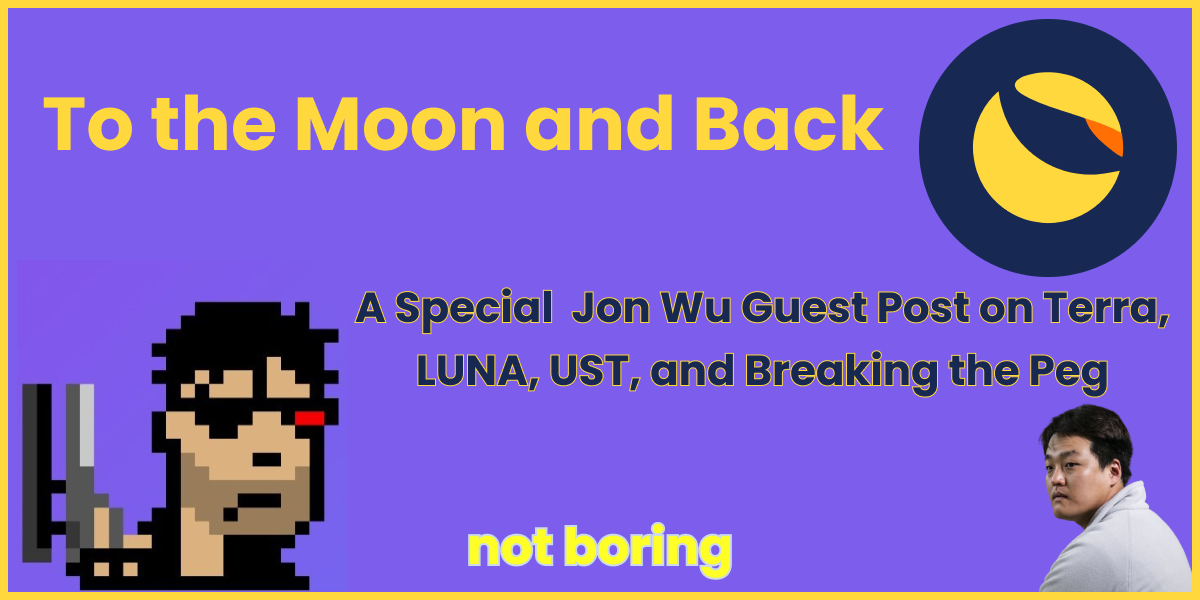
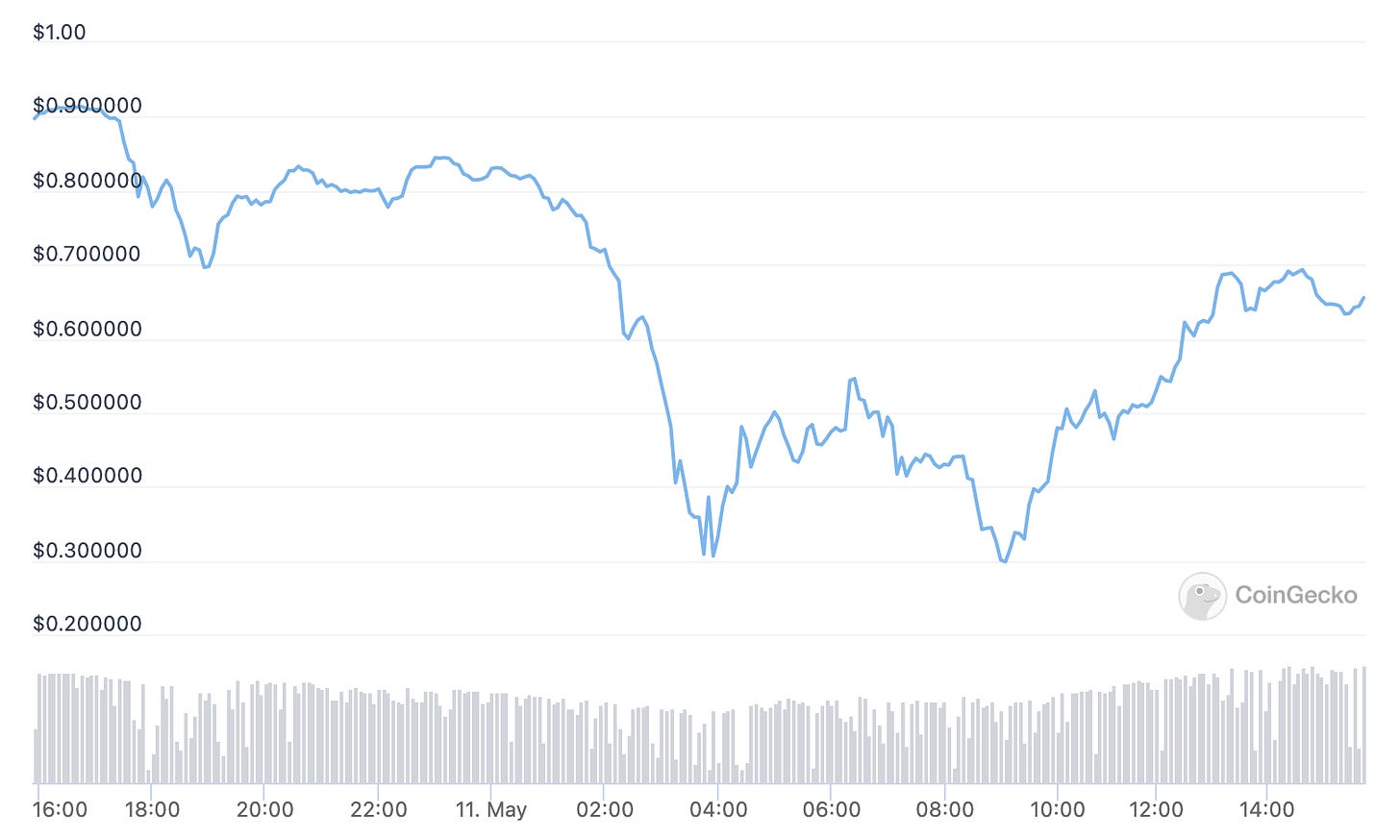

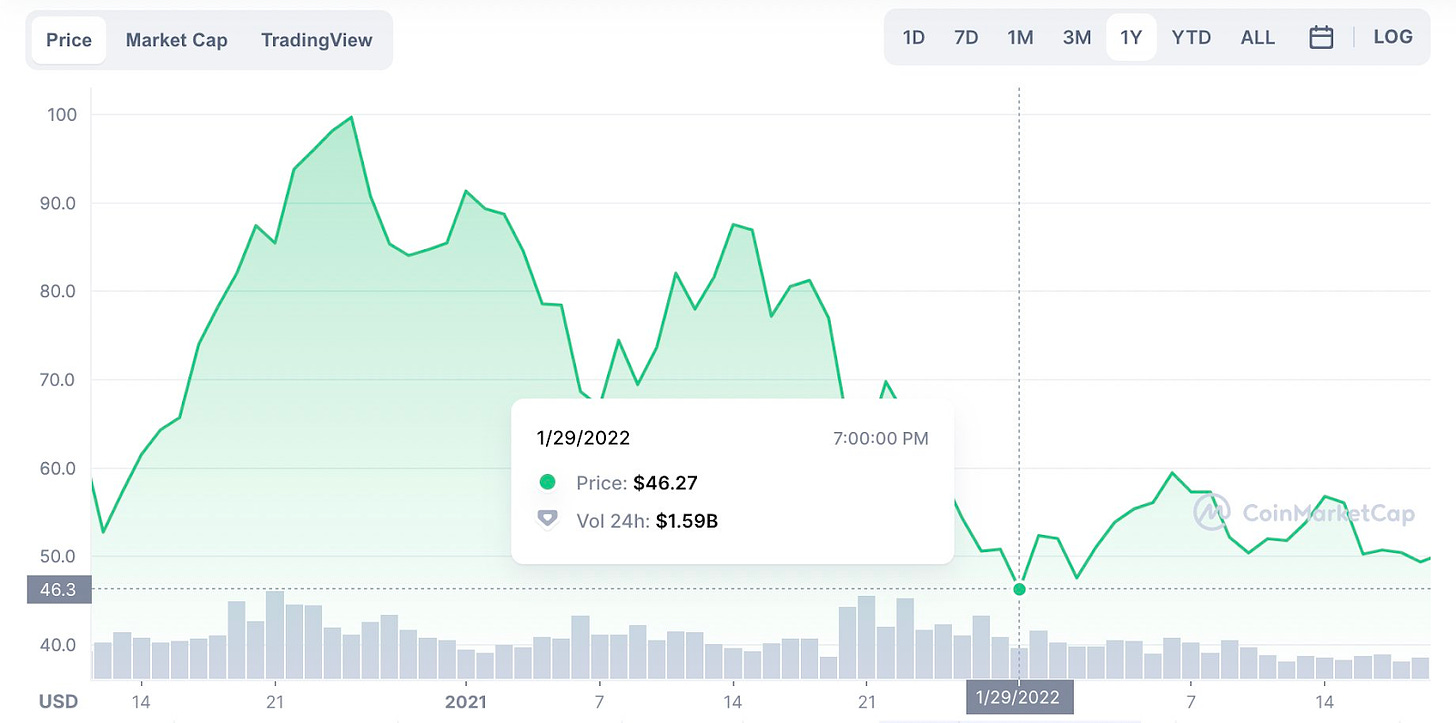
 jonwu.eth @jonwu_
jonwu.eth @jonwu_